Episode #362: How To Avoid & Fix Ineffective Math PLCs
LISTEN NOW HERE…
WATCH NOW…
As a school leader, how can you ensure that teacher collaboration time for math instruction time is truly impactful—not just an extra prep or informal check-in? In this episode, we explore the critical role of leadership in structuring, supporting, and aligning PLCs to improve math instruction. We’ll discuss how to create alignment between Math PLCs, coaching support, and professional development (PD) so that teachers receive cohesive, targeted support that translates into stronger student outcomes. Whether you’re an administrator, instructional coach, or department lead, you’ll walk away with strategies to set expectations, provide meaningful guidance, and ensure collaboration drives instructional improvement.
Key Takeaways:
- Define the goals of PLCs and communicate how they connect to school wide/district wide priorities.
- Ensure teacher collaboration time is reinforced by coaching cycles and targeted professional learning.
- Implement predictable meeting agendas that focus on student learning, data analysis, and instructional planning.
- Train teacher leaders to guide discussions effectively and keep meetings focused.
- Use observation, teacher feedback, and student data to assess and refine PLC effectiveness over time.
Attention District Math Leaders:
Your Guide To An Effective Math PLC Structure
Not sure what matters most when designing math improvement plans? Take this assessment and get a free customized report: https://makemathmoments.com/grow/
Ready to design your math improvement plan with guidance, support and using structure? Learn how to follow our 4 stage process. https://growyourmathprogram.com
Looking to supplement your curriculum with problem based lessons and units? Make Math Moments Problem Based Lessons & Units
Be Our Next Podcast Guest!
Join as an Interview Guest or on a Mentoring Moment Call
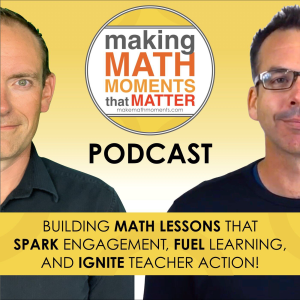
Apply to be a Featured Interview Guest
Book a Mentoring Moment Coaching Call
Are You an Official Math Moment Maker?
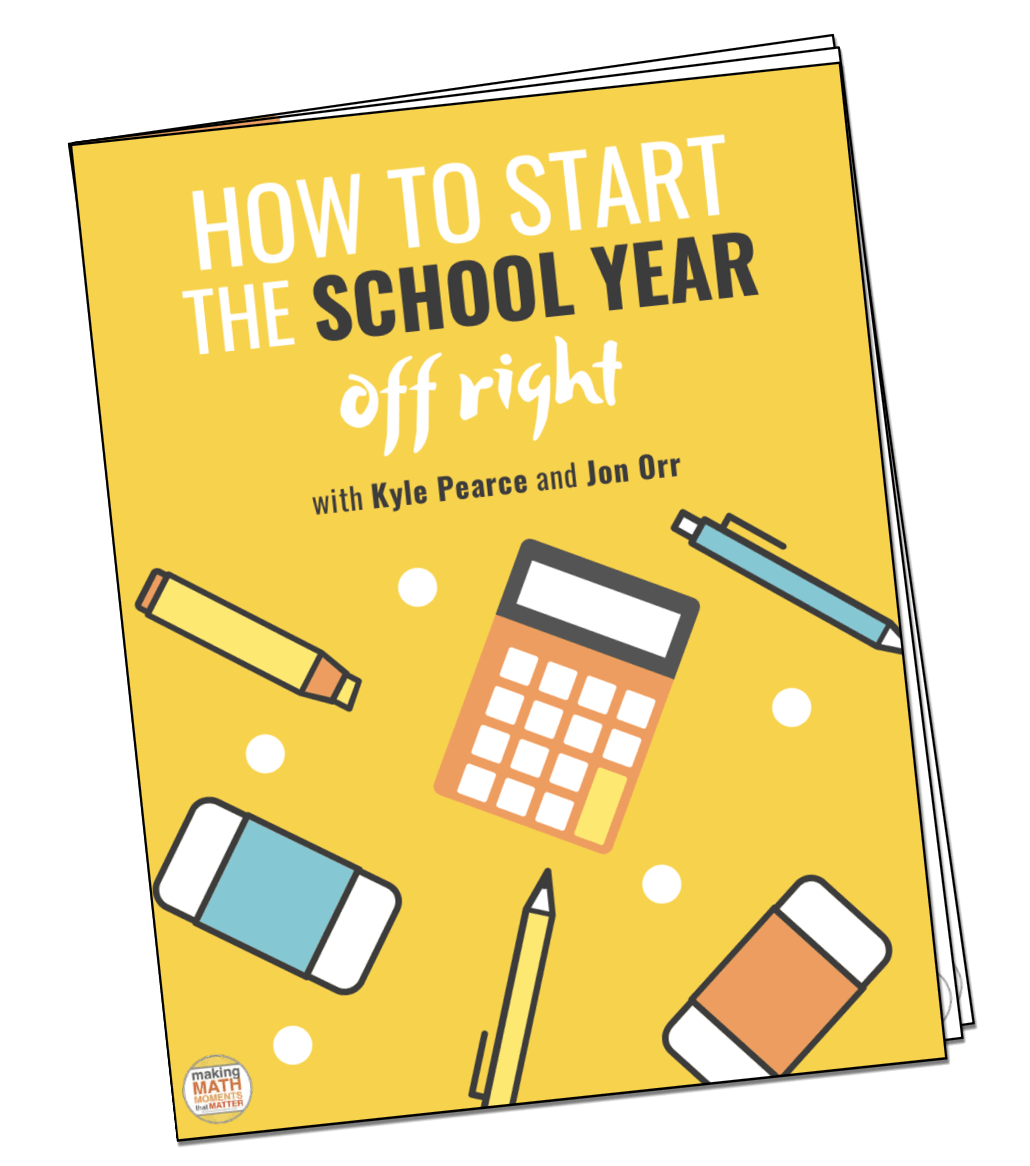
FULL TRANSCRIPT
Yvette Lehman: On Monday’s episode this week, we talked directly to teachers about how they can get the most out of their PLC or teacher collaboration periods. And today we’re gonna talk to leaders and your role in really maximizing this really powerful professional development structure.
Jon Orr: Yeah, because I think, you know, in Monday’s episode, we unpacked this kind of, you know, it sounds, I feel like it’s a staggering fact or data point that probably isn’t actually staggering because we all know what’s happening in PLCs and we all get a sense of like what our PLCs look like in our schools and look like in our districts. But, you know, it sometimes feels like if we do have collaboration time scheduled for our educators,
how are we or how are they utilizing that time? the data point that we were highlighting in Monday’s episode at the start there was to say, when you think about the actions that are being taken during collaboration time, you think that teachers should be collaborating on lesson planning and routines for their classroom and making either their lessons better. But what we saw from basically this study was that
over 70 % of the time was mostly spent on logistics and tips and tricks. So, you know, thinking about like, what are we doing next week? Are we all gonna be teaching this on this topic? Or what worksheet are you using? Or what resource are you using to fill that? So a lot of focus on the what, and not the how and the why. And really we know that if we’re trying to strengthen our system, we’re trying to strengthen our classrooms,
We really need that collaboration time to be spent unpacking those standards to figure out and help our educators understand themselves, the how and the why. Like why this standard? Like what’s the big idea around this and why does that matter for our students? And then how do we do it effectively so that students take the learning and embed that learning into their journey?
Most of that time isn’t being spent the way it needs to be spent for the most impact. So we’re going to continue in this episode to unpack how we as leaders, as we as coaches, as coordinators, as administrators can really structure that time, but also optimize that time so that we get the most impact in our classrooms. And we’ve been digging into this a lot and we’ve got some frameworks to share.
Jon Orr: And continue to kind of build off of from from Monday’s episode, but also some some nuggets to kind of kind of lead the way for you
Yvette Lehman: So the first recommendation we’re going to make to our leaders listening is that the work that’s happening during PLCs or teacher collaboration time should not feel disconnected from the rest of the work that’s happening at the school level or district level. So PLCs should be part of a coordinated system. So when you think about the different channels that you have available to you, so let’s say you have pull-out PD, you have PLCs and you have coaches. What the coaches are doing
And what’s happening in the PLCs should not feel like different priorities. This should all be working cohesively together, which means we need to have clarity around our vision and our objectives mathematics, which we talk about all the time. So ideally, know, coaches, if they’re in that building are being scheduled to be a part of the PLC so that they can continue the learning that stems from that collaborative time into the classroom and support teachers with the implementation of
whatever action steps come from the PLC. Whatever’s happening in the pullout PD should be evident in the conversations that are happening at the table when teachers come back to the school level. So this cohesive use of our available channels is critically important because when we don’t have that, when the person planning the pullout PD has a different agenda or priority than the school-based leader planning the PLCs or the coach who’s coming in every other day, it becomes
very overwhelming for the teacher. And at that point, what we see is a lot of disengagement. So that’s like our first recommendation to leaders is ensuring that this structure is embedded amongst a cohesive system that you’ve created.
Jon Orr: And to be honest, what we’re seeing across North America when we speak with leaders is that normally that’s not the case. Normally this miscoordination is currently happening is that large pullout sessions are one topic. PLCs are either, as we said, kind of misused or also just not coordinated with that, the big goals of what the district is working on. Oftentimes the district hasn’t focused on that.
We don’t have say the vision for mathematics. We don’t have our two priorities that are going to make the most impact this year and how are we going to make that impact? So there’s we’ve a lot of times that’s what trickles down into the PLC time is that it isn’t coordinated because we just haven’t we haven’t thought about that how to coordinate and that would be this is why it’s the recommendation is that we are thinking about structuring PLCs. We have to have that coordination. We have to kind of think about that and if we don’t
then the impact’s just not gonna be there. It’s not gonna be there the way you think it’s going to be there because we’re not, say, making sure that the support that you’re providing, so large-scale pull-out, can be the awareness level in saying these are the beliefs, these are the ways it could look like, this is what we’re trying to aim towards. And reminders, like good reminders, it’s an awareness type of professional development. Your PLCs is the collaboration time to really unpack what this could look like and have the peer-to-peer support to make that happen. Your individual coaches,
are now your boots on the ground, let’s get into it with our teachers, seeing it in action and providing real time feedback. All of that needs to be coordinated to have the impact. Now, if you’re not coordinating, you just don’t get that impact. You don’t have that same level of impact that say other districts or other schools are going to have because they’ve coordinated at that level.
Yvette Lehman: Another recommendation for leaders is to protect and prioritize this time. The minute that we use it for another purpose or cancel it or, you know, whatever happens where we disrupt the cycle tells educators that this time is not valued. And so just being incredibly mindful. If the PLC or teacher collaboration time is the only time at your disposal to
share logistics or get through some managerial work, I would be very mindful of when you do that. And I would certainly ask teachers when an appropriate time would be because imagine, and we’re going to describe our cycle, you’re in the middle of a three week cycle and now your plan is completely disrupted because you find out that morning that the principal’s coming in and going to use that time for a different purpose. It is very disheartening. So we would advise, you know, to be very, very cautious about using this time for any other purpose than teacher collaboration and teacher learning.
Jon Orr: Yeah, and to build on that, I think what you’re saying, Yvette, is that that time, like you the leader, so if you’re an administrator right now, you’re protecting that time and you’re making sure that you’re committed to supporting that time. If you’re the coach, you’re protecting that time and you’re making sure you show up. If you’re the math coordinator and you’re supposed to be leading that, then you make sure that that’s, you know, you’re protecting that time because what you’re doing, right,
If again, you have that coordination at all levels, then you’re telling your teachers this is important. And the moment you cancel, and the moment you don’t show up, then you’re telling them it’s not that important. And that’s not the priority. So if you rewind and reverse engineer, if you know that that’s going to be a priority for you, and we want it to be a priority for you, you have to just decide what commitment level can you commit to?
So if you’re the administrator in the building and you’re trying to lead that PLC or you’re trying to say facilitate that PLC, then you have to also go, how many PLCs can I commit to throughout the year? Because I know that that’s important and I know that I need to commit. Like we have to make that commitment level, because when you commit, you can help you say what your impact is going to be throughout the year, because you know that that coordination is important. So you just want to make the commitment and say,
I am not, this is a non-negotiable for me right now is to commit to the PLCs because I believe that structuring and making use of collaboration time in my building or in my district is essential. So, but if it’s not essential, if you don’t believe it, it will show, right? It’s going to show and the teachers will know it just like when you’re in the classroom and you were a teacher and the kids knew that that teacher.
wasn’t into it or they know that the kids pick up on that, educators pick up on that stuff too. So if you say you’re committed, then commit. But yeah, so that brings, I would say that easily leads into one of the other nuggets we want you to take away, right? Yvette is about like, is the, the who of the facilitation of a PLC is extremely important.
Yvette Lehman: Yeah, that was a great kind of segue into this idea of, so research suggests that the most impactful PLCs or teacher collaboration periods are led by a skilled facilitator. That’s what the data suggests. And we talked about, is it possible for there to be an impactful PLC without, let’s say,
one, I think it’s true, you might have multiple skilled facilitators and a really cohesive community of educators that work well together. But typically you’re going to get the greatest impact from these collaboration periods if you have a very skilled facilitator who has strong content knowledge. So who, you know, deeply understands the mathematics content, the curriculum and the pedagogical shifts that you’re trying to make in the classroom. And that’s not
purpose of that role is not to take over the learning but to steer and guide the direction and to keep the structure running smoothly. And so thinking about who that person’s going to be. Is it you? Are you positioned? Right now, you on this, you know, listening to this episode and you’re a coach and you’re like, yes, I’m in a position to do that work. I’m going to be the facilitator not to rob the teachers of their thinking, but to just ensure that the structure
run smoothly and then I’m offering some guidance and recommendations along the way. Is it you the principal listening? Are you positioned to facilitate this learning? And if the answer is, I might be listening right now and I’m a leader in my building, but I don’t have the content knowledge or the time to be the facilitator of these PLCs, then who can you identify within your building who can?
How are we building the capacity of our lead teachers and expert teachers that they are empowered and have the skills that they need to facilitate? We talk about this all the time and I love the quote that you always share, John, which is like, great leaders create other leaders. And so it’s not about keeping this work just for ourselves, it’s about seeing potential in those around us and positioning them to be skilled in this work as well.
So who are we identifying and empowering to lead? And so that’s one question we always ask our districts, which is who is the facilitator? And if we can’t answer that question, we really need to identify who those bright spots are in our system who would be well positioned to do that work.
Jon Orr: For sure, for sure. It’s like, you know, we have a framework that we kind of roll through that helps us decide like what commitment level we can, you know, commit to when we’re engaged in any sort of action that can help us reach our goals across the district or a school. And one of the first kind of points in that flow chart is that like, if I’m going to go down this pathway, it’s like, do we have the right facilitator? Do we have a skilled facilitator to lead this work?
And if the answer, like you’re saying, if the answer is no, that becomes the work. Is like, who can do this? Because we can give you the framework. We have a framework to lead a PLC, but if we don’t have that skilled facilitator, it won’t be as impactful as it could be. So then if we don’t have that person to lead it, then we need to be supporting in parallel support for those lead teachers.
And if we’re not planning for that support, then again, that impact won’t be there. So you can say, hand off structure to a group of teachers to run PLCs. You can say, try to encourage PLCs if you can’t be that lead facilitator, or you can’t be there if that lead facilitator isn’t there. now what are we going to do to identify those bright spots, invest in those bright spots to help them?
you know, I guess kind of grapple or kind of wrap their wrap their minds around like, becoming that leader to help lead a PLC. What are some of those gaps that we need to help them fill so that they can say lead the work, because they’re the closest component, you know, to be leading that and that and facilitating that PLC for the rest of the, the collaboration or the teachers at that school. And, and
you know, how do we start positioning them to be consistent at that? Because if we can do that, that’s where you’re building your sustainability, right? that’s the part that we need to make as the main focus for improvement across your school or your school district is that we need to continually say who are our next leaders. And if I’m not continually making that the main priority, then you’re…
Jon Orr: we’re going to continually have this kind of like stagnation in education because what happens is if we’re not investing the leaders, like who becomes the next leader? Because people retire, people move on to different roles. And then if there’s no one there to step up, it’s like we’re starting from scratch again. It’s like that leader has to go through their own learning journey or that teacher who becomes say the next coordinator, you know, has to go through their own learning journey to even just catch up. But if we’re continually trying to build those people up from school,
throughout our ongoing process, then it’s a sustainable model that we’re building because we can lean on those people on consistent basis.
Yvette Lehman: I always ask the question, you know, and I think we share this experience, John, and probably most of our listeners today. Like, how did you get where you are today? And for me, and I’m sure for you, it started at the school level. Like, of course, it started in my PLCs, you know, where I was given the opportunity to take on leadership roles within just, you know, just my own school. And those leadership roles grew to board level work. I mean, this is where it starts. And this is a great space for us to build capacity.
The other suggestion that we have for leaders, and we’re gonna build off of our conversation from Monday’s episode for teachers is that we firmly believe, I think, can say that now, John, I think we’ve debated this topic enough that there’s value in having a structure. We had an episode recently about autonomy versus alignment, and it’s like, think autonomy is really important and teacher voice is important, but sometimes we need a baseline to just get started. And then we can innovate.
Like once we’ve put that structure into place, we can adapt and change and innovate as we go. But I think that having a structure to start to kind of get the wheels turning is really helpful because it tells us what to do on day one when maybe the direction hasn’t been clear in the past. So on Monday, we talked about, you know, a formative assessment cycle that can be used in PLCs to provide a structure and accountability for educators while making sure
that the work that they’re doing in that teacher collaboration time has a direct impact on their classroom practice and it feels timely and relevant for them. It doesn’t feel like something that’s separate from the work they’re doing next week in their classroom. It feels purposeful and meaningful. I had a leader say the other day, know, what teachers want to be doing during that time is marking and planning. So let’s do it. Let’s just do it collaboratively and through a structure that’s going to strengthen our understanding of the curriculum and mathematics content.
Jon Orr: I completely agree with the baseline, the foundation that we have to build from. We talked about that in not even the episode that you’re referencing, but in a previous episode about like, should we provide a pacing guide? Like, what does that look like for teachers? And what that does is, you know, it gives them that baseline to extend from because we’re not constantly trying to fill this gap that keeps us survive, you know, to survive to the next day.
Same is true in a PLC. It’s like if we are always showing up to our PLC and we’re trying to like, what are we gonna do? You’re naturally going to fill it with other tasks. You’re naturally going to be like, I’m gonna use this time to answer emails or hey, we’re supposed to be in the room together to do this thing, but I’m gonna be doing this over here while you’re talking with that person over there. Like naturally things will creep in to fill that time because there isn’t a structure. So when we provide that structure or we…
we all agree that this is a structure that we’re going to engage in, then we can say, hey, I think this structure is working well this way, but now I think we should morph it or modify it to include this component. And that’s the importance of providing that baseline.
Yvette Lehman: So just for a brief summary of the three weeks cycle. And again, it’s not the only one out there that exists. There’s a lot of variations on what this could look like. This is one that we worked on that you can grab from the show notes if you want to see it in a PDF. But essentially, you have three weeks to unpack a standard. Ideally, to your point, John, if we’re all using a pacing guide, that means we’re all teaching that same standard around the same time, which makes this timely and relevant for all participating. We’re going to identify.
a that’s maybe been a sticking point in the past where maybe we haven’t seen the highest levels of achievement in the past and we’re going to unpack it. So we’re going to talk about what students need or the prerequisite knowledge to access that particular standard or expectation. We’re going to look at the vertical alignment. So where did this come from? Where is it going? We’re going to talk about the cognitive demand of that particular expectation or standard. And then we’re going to co-construct the learning goal. And we mentioned on the Monday episode,
I have yet to meet a single person who has gone down the five practices road and said Step Zero was easy. Like I think people, you know, sometimes maybe at first underestimate how challenging Step Zero is going to be when it comes to actually crafting a learning goal that describes the enduring understanding we hope for students. So that is time well spent within this community to craft that learning goal.
And then ultimately by the end of the first week, we want to identify a common assessment that we’re going to take back to our students, take back to the classroom.
Jon Orr: Mm-hmm. You know, and I think about week one, and this is where the skilled facilitator is, can make the impact that person needs to make. So if you’re the skilled facilitator to lead this PLC following this structure, this is the part where now you get to help them go like, this is going to be, you know, impactful for our classroom, but you get to steer some of the information and what are we going to be working on and what does that standard really do and what are the big ideas from this standard? Like, this is where you get to convey
And basically, the goals and the objectives of, your school or your school improvement plan or your objectives from your district and really the mathematics vision for what we are hoping to convey into our students or give to our students in their experiences in math. You have to, as that facilitator in your leading of this PLC, you have to keep those in mind because this is where the transfers.
This is where that just, it was big important ideas transfer into what we’re going to be doing is because we’re going to be unpacking say this standard. And we want those teachers to take that learning when we have to focus. What is it that we want them to take? And that’s where that coordination can come from, from, you know, some of those goals that you’ve set around the vision for math. So if you don’t have a vision for math, sometimes these PLCs, even with the structure can feel disjointed.
because we’re not, say, continually striving to reach the same level of experience for our students. every time you run through the cycle, every week one, every week two is in the cycle, you start to focus on the similar things and similar structures that you want your students or your teachers to put into their lessons because you’ve got that coordination. if you’re not, that’s where teachers are like, well,
every week, every time we go through the cycle, feels like we’re adding another layer of like, what what is supposed to be you know, what is this supposed to look like when no one really has a clear picture of like, what our lessons are really supposed to look like, even if I’m using the guide, this is where the skilled facilitator gets to, to transfer some of this coordination towards this this completed picture.
Yvette Lehman: So then on the second week, they come back and they bring student work to the table. We talked, you know, in previous episodes about the value of moderated marking and, you know, we often hear from districts a couple of things about assessment. One is inconsistency, but also one challenge that I’m hearing quite commonly is inflated.
of evaluation also, where it’s like we’re actually lowering the rigor of the curriculum and students, know, we have entire classes who are achieving A’s or A’s and B’s and really it’s like those issues can be addressed through moderated marking. Like if we’re ensuring that we understand what mastery of that expectation or standard looks like.
by looking at standardized test questions that have been released, by looking at a high quality instructional material like our resource that’s in our buildings, and then moderating our marking to ensure that if I’m giving awarding four points and you’re awarding two points, we understand why. And we can really kind of get more cohesive when it comes to understanding what mastery of that particular expectation looks like at that grade level.
Okay, so after we come together on week two, we moderate and we plan ahead. So it’s like we plan ahead and we decide what instructional moves are we going to make this week? What shifts are we gonna make in our practice? What models, what strategies? Who are we gonna see in small group? That’s the planning part, right? And that’s where we said this should feel like planning for teachers. They are planning for next week. The third week, they come back together to basically debrief and describe the impact of those moves by bringing new student work to the table.
talking about any challenges, any successes that they had and really debriefing what they learned through that cycle in preparation for yet another one to begin the following week.
Jon Orr: Love it, love it. So, know, Yvette’s kind of highlighted as a high level, this structure that, you know, we’re, you know, helping our partner districts implement when it comes to PLC time. You know, there’s a document here that she’s built that you can have. You just go to the show notes and access that or find the link to access that particular document because in that…
It’s gonna outline the structure, gonna outline some prompts, things to think about, some the ways it should be structured. It’s not just three bullet points, it’s got a lot more involved. Like I said, it’s a component that we think a lot about because it’s really embedded in the four big stages that we know are essential for math improvement planning across a school or a school district. We strongly believe there are four key areas, four zones that we need to
to kind of consider when we’re planning sustainable and aligned math improvement plans. And what we’ve been talking about here, PLCs is a huge part of two of those components, one of them being like what we call like stage two, which is about optimizing and sustaining our structures. And PLC is a structure that we heavily can lean on to make some impact on your goals and the impact you’re trying to create to achieve the vision.
of the work that you want to be in your classrooms. It also highly impacts stage three, which we know is about building capacity, is how do we help our teachers understand the mathematics? How do we help our teachers understand the pedagogical content knowledge so that they are equipped to engage in those lessons? Those two kind of go hand in hand when we think about PLCs. They’re heavily embedded into those two zones or those two stages of math improvement planning.
You know, and we talked a lot, actually a lot about stage one, which is designing an or designing a measuring, which is really getting clear on like what impact you’re trying to create in your school or what impact you’re trying to create in your in your district, which is having this vision for math and then and then narrowing down what focus zones you want to strengthen. We call those our objectives and then getting clear on what measurable you’re going to track throughout the year to know that you’ve got impact on the certain areas that you’re hoping to create impact on. So having that
Jon Orr: as a component of your math improvement plans helps you steer those PLCs to be the most effective. So that you can build that capacity and start to work on, you know, creating leaders, which is our fourth zone, which is how do we create sustainability is really focusing on those creating leaders. We talked about that too, is if we’re not doing that, if we’re not structuring the support we give to create more leaders, then we’re really not building a sustainable program. So.
If you want to learn more about the four stages of math improvement planning, you can head on over to makemathmoments.com forward slash grow, makemathmoments.com forward slash grow. And if you want to get in touch with us to talk about how we can embed that into your system, then go to makemathmoments.com forward slash discovery. That’s makemathmoments.com forward slash discovery.
Thanks For Listening
- Book a Math Mentoring Moment
- Apply to be a Featured Interview Guest
- Leave a note in the comment section below.
- Share this show on Twitter, or Facebook.
To help out the show:
- Leave an honest review on iTunes. Your ratings and reviews really help and we read each one.
- Subscribe on iTunes, Google Play, and Spotify.
DOWNLOAD THE 3 ACT MATH TASK TIP SHEET SO THEY RUN WITHOUT A HITCH!
Download the 2-page printable 3 Act Math Tip Sheet to ensure that you have the best start to your journey using 3 Act math Tasks to spark curiosity and fuel sense making in your math classroom!
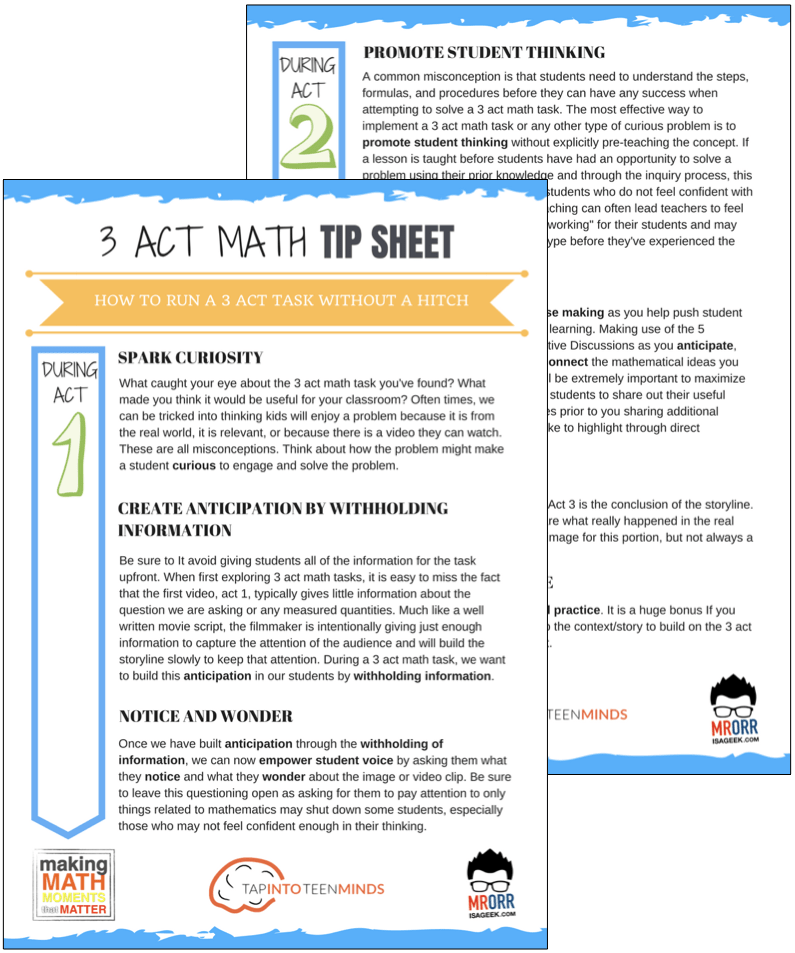
LESSONS TO MAKE MATH MOMENTS
Each lesson consists of:
Each Make Math Moments Problem Based Lesson consists of a Teacher Guide to lead you step-by-step through the planning process to ensure your lesson runs without a hitch!
Each Teacher Guide consists of:
- Intentionality of the lesson;
- A step-by-step walk through of each phase of the lesson;
- Visuals, animations, and videos unpacking big ideas, strategies, and models we intend to emerge during the lesson;
- Sample student approaches to assist in anticipating what your students might do;
- Resources and downloads including Keynote, Powerpoint, Media Files, and Teacher Guide printable PDF; and,
- Much more!
Each Make Math Moments Problem Based Lesson begins with a story, visual, video, or other method to Spark Curiosity through context.
Students will often Notice and Wonder before making an estimate to draw them in and invest in the problem.
After student voice has been heard and acknowledged, we will set students off on a Productive Struggle via a prompt related to the Spark context.
These prompts are given each lesson with the following conditions:
- No calculators are to be used; and,
- Students are to focus on how they can convince their math community that their solution is valid.
Students are left to engage in a productive struggle as the facilitator circulates to observe and engage in conversation as a means of assessing formatively.
The facilitator is instructed through the Teacher Guide on what specific strategies and models could be used to make connections and consolidate the learning from the lesson.
Often times, animations and walk through videos are provided in the Teacher Guide to assist with planning and delivering the consolidation.
A review image, video, or animation is provided as a conclusion to the task from the lesson.
While this might feel like a natural ending to the context students have been exploring, it is just the beginning as we look to leverage this context via extensions and additional lessons to dig deeper.
At the end of each lesson, consolidation prompts and/or extensions are crafted for students to purposefully practice and demonstrate their current understanding.
Facilitators are encouraged to collect these consolidation prompts as a means to engage in the assessment process and inform next moves for instruction.
In multi-day units of study, Math Talks are crafted to help build on the thinking from the previous day and build towards the next step in the developmental progression of the concept(s) we are exploring.
Each Math Talk is constructed as a string of related problems that build with intentionality to emerge specific big ideas, strategies, and mathematical models.
Make Math Moments Problem Based Lessons and Day 1 Teacher Guides are openly available for you to leverage and use with your students without becoming a Make Math Moments Academy Member.
Use our OPEN ACCESS multi-day problem based units!
Make Math Moments Problem Based Lessons and Day 1 Teacher Guides are openly available for you to leverage and use with your students without becoming a Make Math Moments Academy Member.
Partitive Division Resulting in a Fraction
Equivalence and Algebraic Substitution
Represent Categorical Data & Explore Mean
Downloadable resources including blackline masters, handouts, printable Tips Sheets, slide shows, and media files do require a Make Math Moments Academy Membership.
ONLINE WORKSHOP REGISTRATION
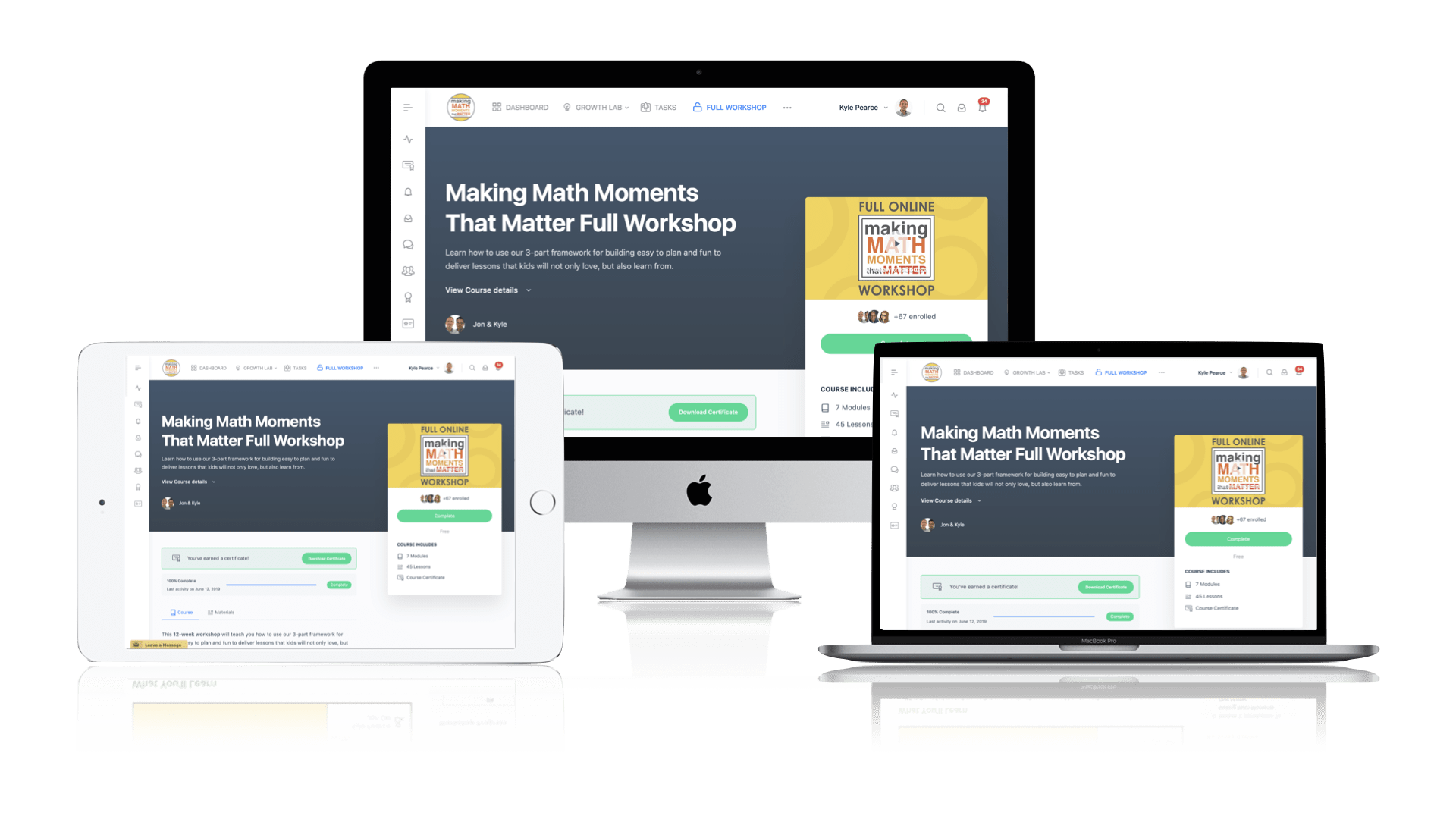
Pedagogically aligned for teachers of K through Grade 12 with content specific examples from Grades 3 through Grade 10.
In our self-paced, 12-week Online Workshop, you'll learn how to craft new and transform your current lessons to Spark Curiosity, Fuel Sense Making, and Ignite Your Teacher Moves to promote resilient problem solvers.
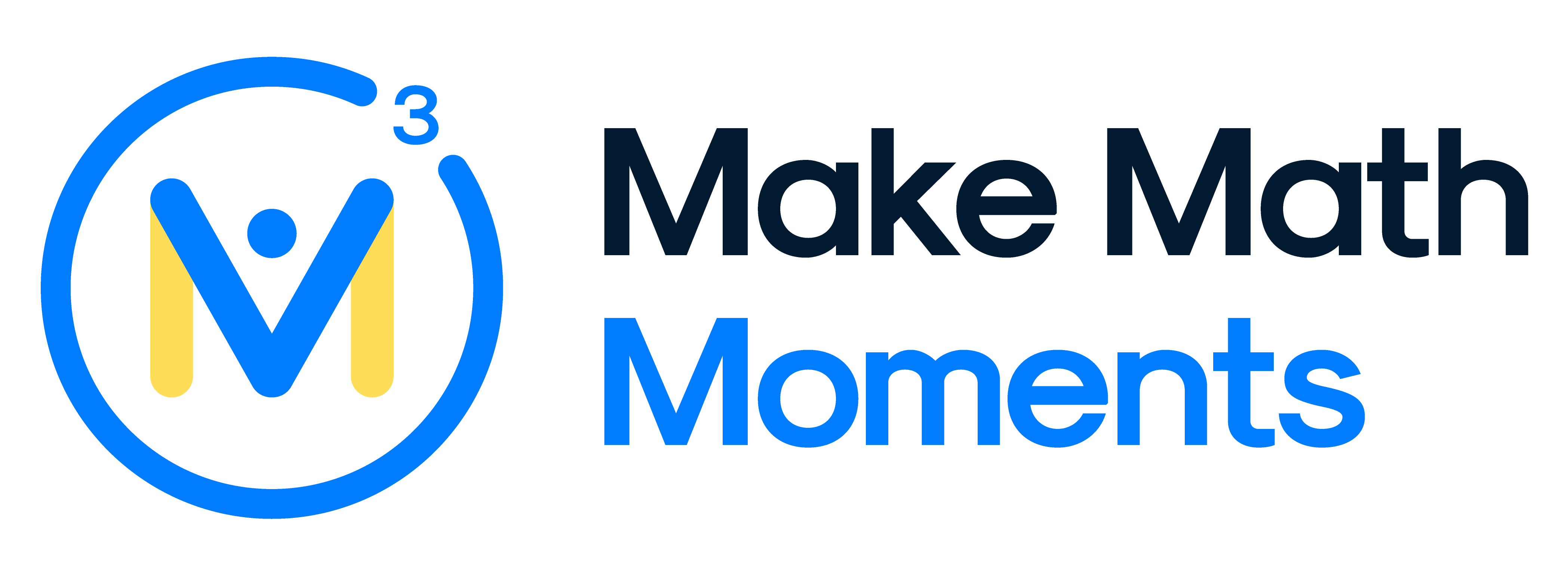



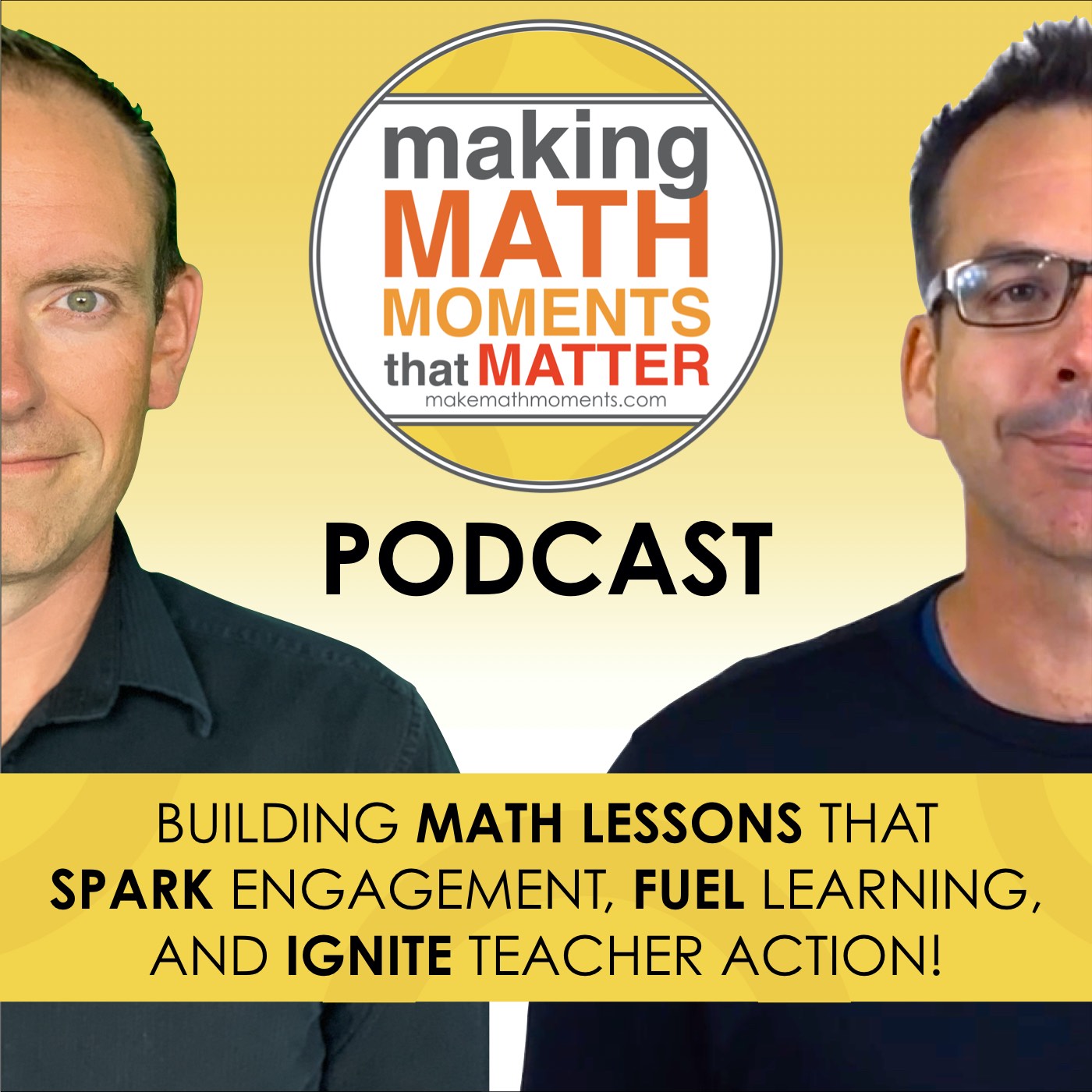
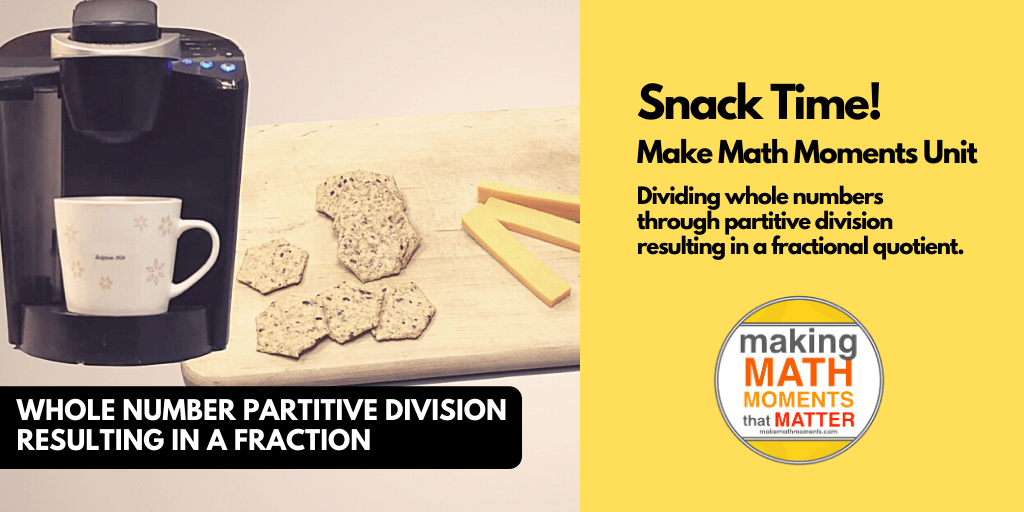

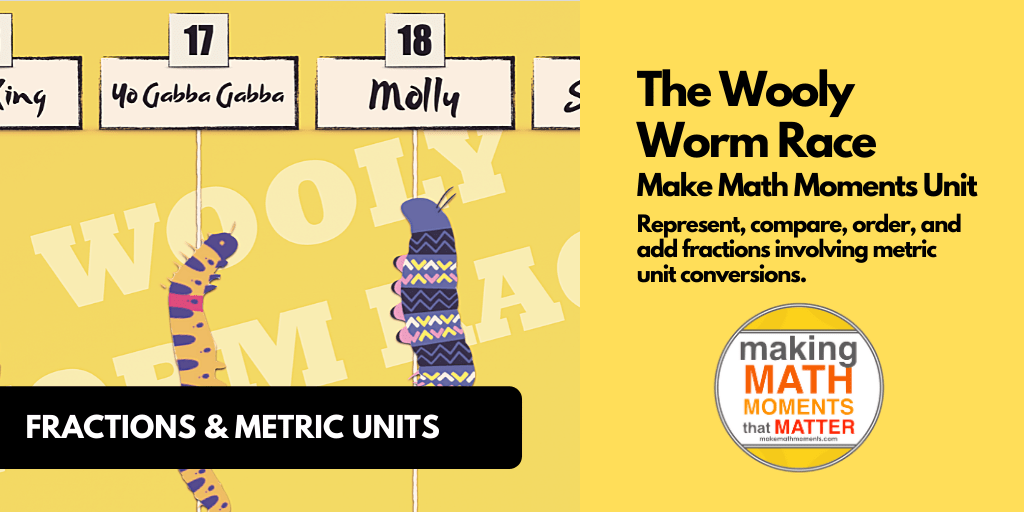
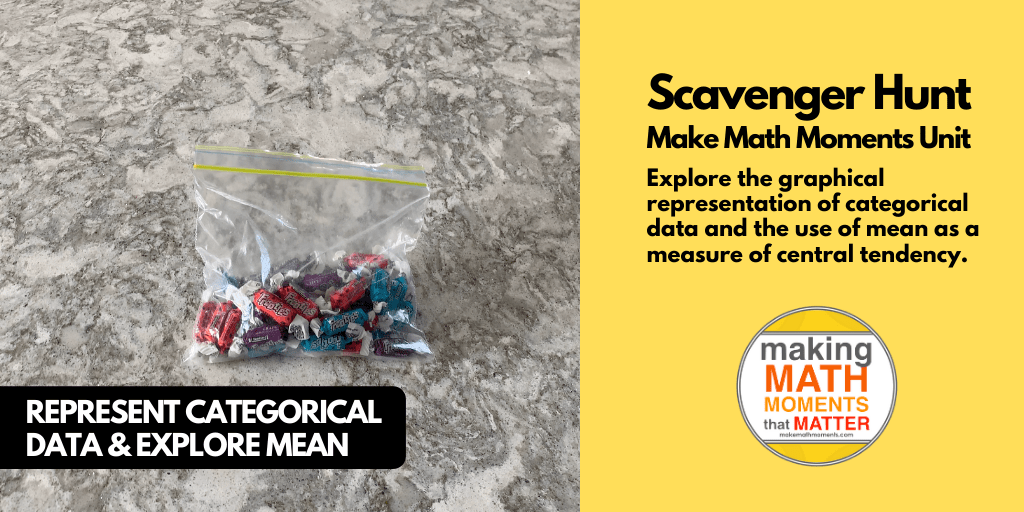
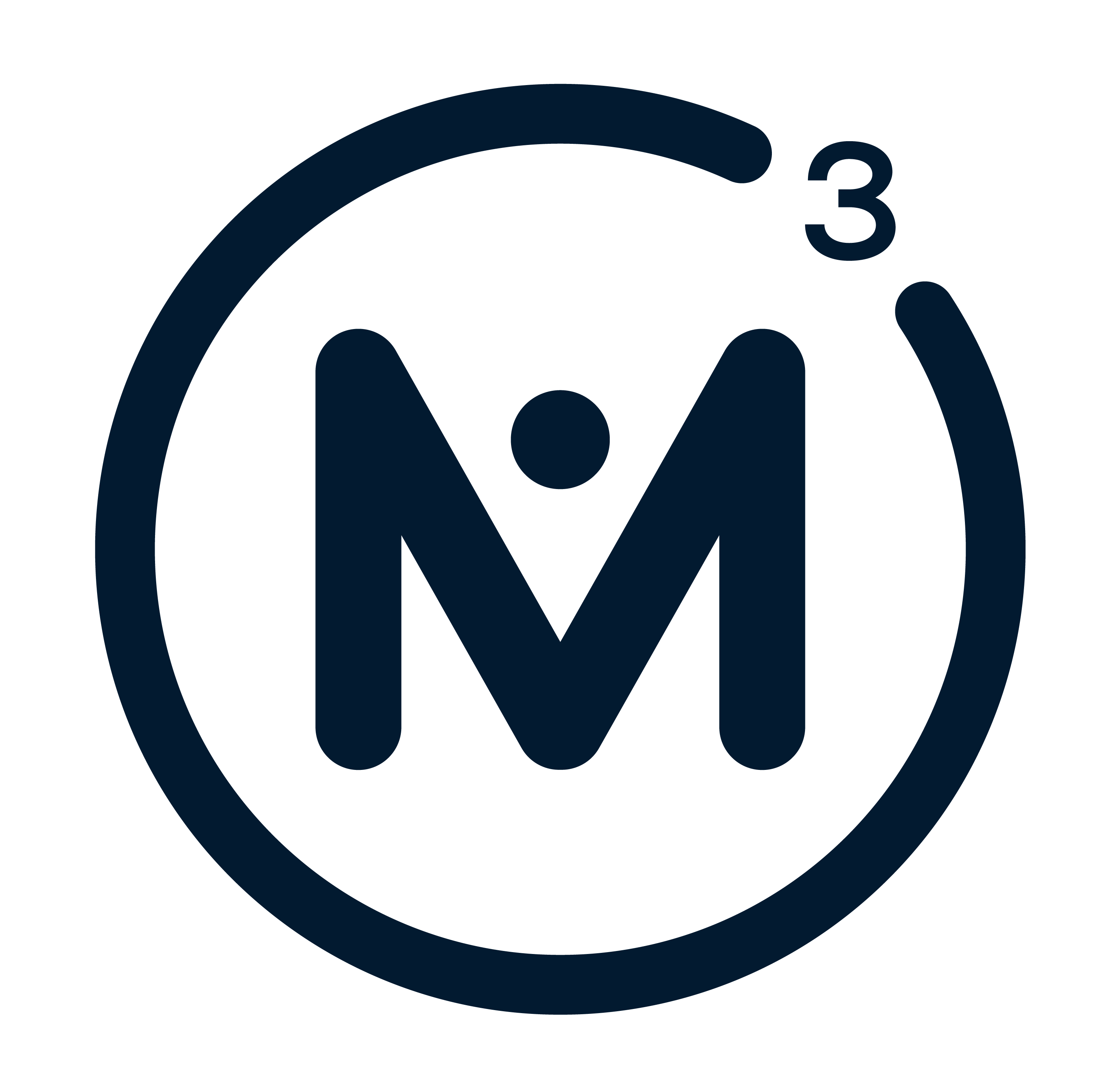
0 Comments